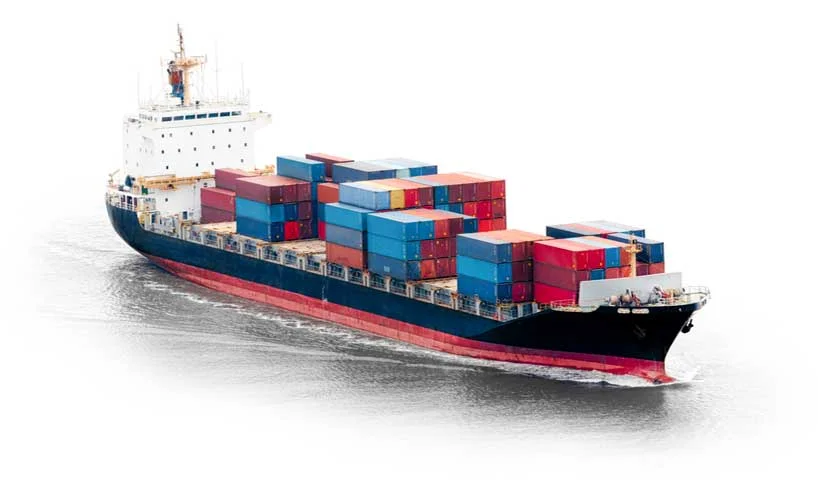 info@winteam.co.in
info@winteam.co.in +91 9960 1452 96
+91 9960 1452 96 +91 022 6741 1330 / 32 / 33
+91 022 6741 1330 / 32 / 33
 info@winteam.co.in
info@winteam.co.in +91 9960 1452 96
+91 9960 1452 96 +91 022 6741 1330 / 32 / 33
+91 022 6741 1330 / 32 / 33



A CFS is a space, usually a large warehouse, that specialises in the consolidation and de-consolidation of LCL cargo. Consolidation is the process of combining multiple LCL shipments to form a Full container Load (FCL) while de-consolidation is its reverse. This does not mean a CFS deals only with LCL cargo. It handles CFS-stuffed FCL cargo too (FCL being the mode of shipping one large consignment that takes up an entire container and belongs to a single shipper).
A CFS is also a place where goods for import and export are stored temporarily. It is an extension of a port or terminal and was conceived with the objective of clearing congestion at India’s ports and terminals. While CFS might have started off as an Indian concept, it is now part of the international shipping vocabulary.

To expand on the description above, a CFS is located close to a port, terminal or inland container depot (more on this later). It might sometimes be found near a major railway hub as well. Container freight stations are owned by shipping lines and terminals or are privately owned. A CFS is involved in the import-export business at the points of origin and destination. Container freight stations are, thus, categorised as "Origin CFS" and "destination CFS".
In recent years, container freight stations have become a sought-after facility in import-export, thanks in part to an increasing demand for LCL shipments. This is because they provide a centralised location where exporters and importers can have their LCL shipments sent, secure in the knowledge that their goods will be securely stored, handled and sent on the next leg of their journey.
To clearly understand what a CFS is and its part in India’s import-export industry, it is important to know about its functions.
Receives and consolidates LCL shipments for export
De-consolidates container at destination and dispatches shipment for final delivery
Prepares container load plan
Stuffs and de-stuffs containers (for both LCL and FCL cargo)
Marks and seals containers for identification
Serves as temporary storage space for cargo, empty and laden containers
Moves empty containers from container yards (CY) and laden containers to port/terminal
Stacks, sorts, tracks and tallies containers before and after shipping
Maintenance and repair of containers
Transit operations by road/rail to and from port/terminal
Organises customs clearance procedures such as classification, examination and assessment of goods
Keeps goods safe till they are shipped or picked up
Deals with break bulk (loose, non-containerised) cargo originating or terminating in the immediate hinterland of the port or terminal and with rail-borne traffic to and from inland locations
Exporter loads goods on truck, delivers it at CFS with shipping bill
Goods are unloaded and received by CFS custodian
Goods undergo customs clearance procedures
After customs authorities endorse shipping bill with “let export order”, CFS stuffs goods into the container
CFS seals container hands it over to port/terminal for export
Importer/carrier/steamer agent files import general manifest (IGM) – with details of cargo, exporter, importer, ship/aircraft – at port/terminal to move cargo to CFS
Container received at port/terminal is forwarded to CFS
Cargo is offloaded, stacked and de-stuffed at CFS
Cargo owner or their clearing agent files bill of entry, proceeds with cargo clearance and duty payment
Customs endorses bill of entry with "out of charge" order
CFS custodian issues gate pass to release cargo to the importer
It decongests ports and terminals
Frees them of several customs clearance procedures
Assigns unique identification number to vessels, facilitating easy tracking of cargo and containers
Maintains records of shipments, including names of exporter, importer and customs agent, cargo details, origin and destination ports, carrier name, truck number and so on
•Provides all the benefits of containerised shipping such as greater cargo security, timely and efficient loading, unloading, stuffing and de-stuffing, and a variety of containers to suit your needs
A CFS charges a fee for each activity it performs. Exporters and importers must pay attention to these charges. Failure to do so can result in:
a) increased logistics costs, b) shipment delays, and c) poor relations with customs authorities, which is never good for business
Container stuffing. A composite fee is charged, which includes the cost of cargo carting, placing of the empty container, moving of laden container and the labour involved in these activities.
Cargo storage.
Per-day ground rent for empty and laden containers.
De-stuffing and delivery: This fee includes the cost of transporting laden containers to CFS and grounding for customs examination.
Cargo handling for customs examination.
Cargo storage.
Per-day ground rent for laden containers.
Container scanning: This cost is incurred when customs authorities select a consignment for image scanning for any number of reasons – for example, to detect radiation or to check if the goods are as declared.
Port entry.
Transportation to and from CFS/port.
Lift On / Lift Off - This charge is incurred when LoLo ships – vessels equipped with cranes for loading/unloading containers – are involved or when containers have to be lifted on and off truck-trailerd.
Weighment, or weight verification of a packed container before it is loaded on a vessel.
Reworking, which is the shifting of cargo from damaged containers to other empty containers
Shifting of cargo within CFS.
Container sweeping.
Container repairs.
Provision of labour for cargo segregation, unpacking and repacking packages for customs examination, restacking and other activities.
Chocking, lashing and dunnage to secure cargo.
Reefer handling, such as plugging and monitoring of reefers.
Amendments in documents.
Like a CFS, a container yard (CY), inland container depot (ICD) and bonded warehouse are container handling and storage facilities that facilitate the import and export of goods. However, there are marked differences between them.
A container yard is a dedicated area for full container load (FCL) whereas a CFS caters to both LCL and FCL shipments.
A CY is located within the port, unlike a CFS, which is located close to a port or terminal. A CFS picks up empty containers from a CY for FCL and LCL export shipments.
A CY’s Functions include aligning containers for loading on ships and storing off-loaded containers until they are transferred to a CFS or rail yard or handed over to the importer.
Both CY and CFS have cut-off dates by which the container must be delivered in order to make the scheduled sailing.
Like a CFS, an inland container depot (ICD) is an Indian concept. But unlike a CFS, which is located close to ports and terminals, an ICD is found further inland. The idea behind an ICD is to help exporters/importers handle their shipments closer to their factories and warehouses, especially if these are quite far from ports and terminals. It is for this reason that they are also called dry ports.
An ICD is an independent customs station like those at ports, airports and on land. It has its own automated system that allows it to examine goods and assess and process documents. On the other hand, the customs infrastructure at a CFS is an extension of the parent customs station at the port/terminal. A CFS examines goods but the processing and assessing of documents takes place at the customs house or customs station to which the CFS is attached.
A bonded warehouse is the most different of all these facilities. It is a space authorised by customs (under a customs bond) to store import and export goods (local and foreign) on which duty payment has been deferred.
Bonded warehouses were conceived with the idea of insulating traders from cash flow problems. They give importers time to come up with the money for duty payment or find buyers for the goods. By transferring the title of goods to the buyer, the importer can push the duty payment on to the buyer.
If the importer is unable to find a buyer, they can export the imported goods without paying duty on it.
Goods can be stored at a bonded warehouse indefinitely. Doing the same at ports/terminals would result in huge demurrage fees. (Demurrage is the per-day fee a shipper pays the carrier for use of a container within a port beyond an allotted free time).
Another area in which a bonded warehouse is different from a CFS, CY or ICD is that the goods stored in it have already undergone customs clearance procedures.